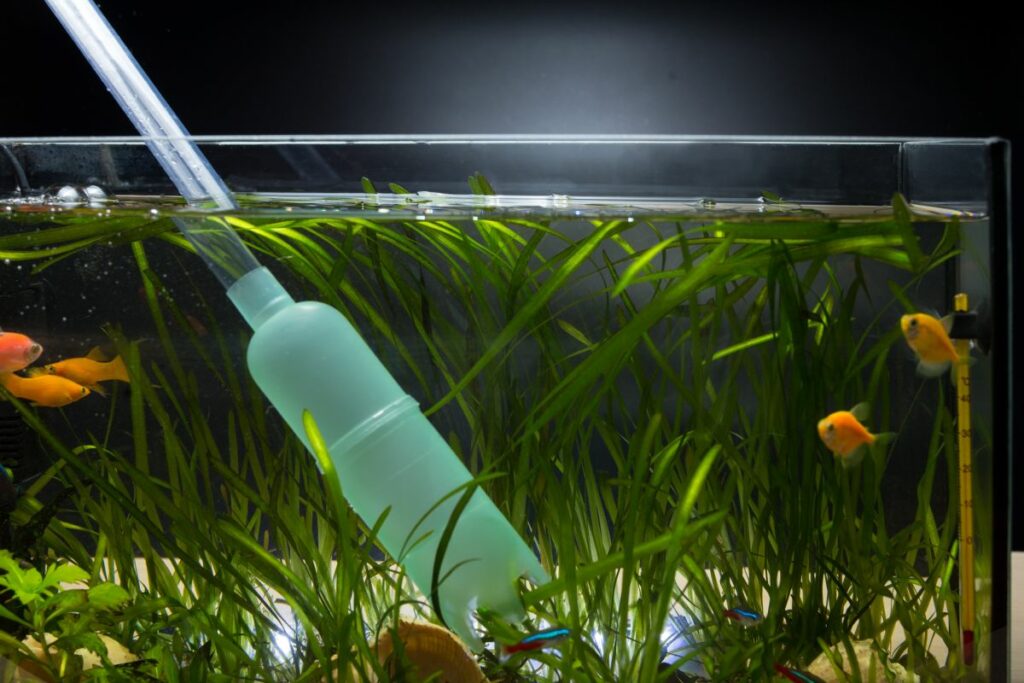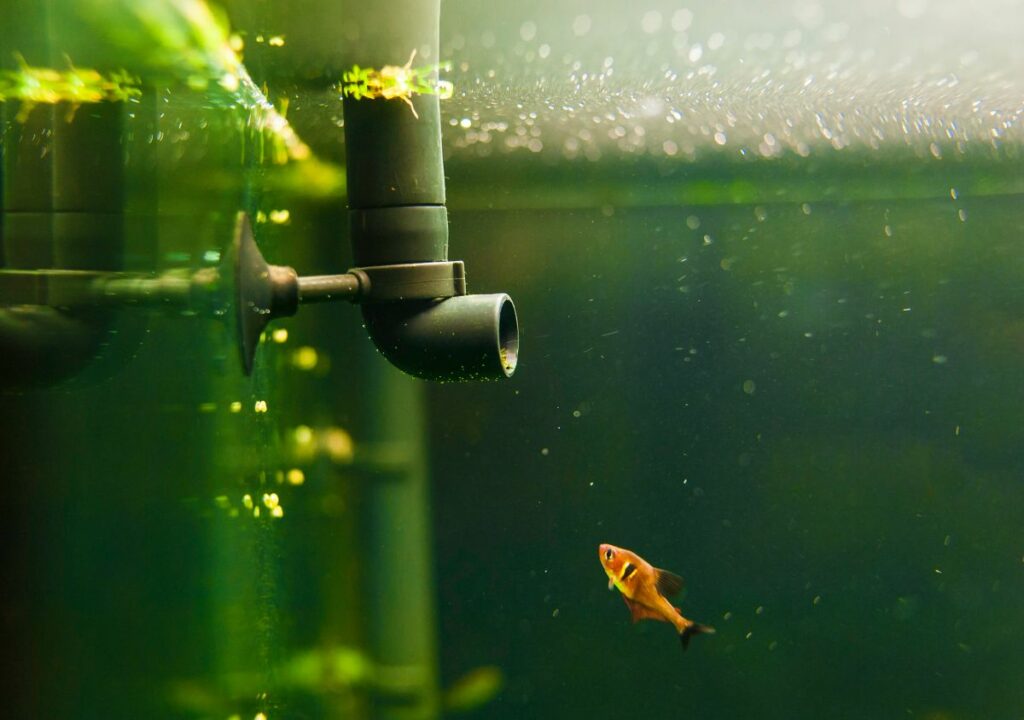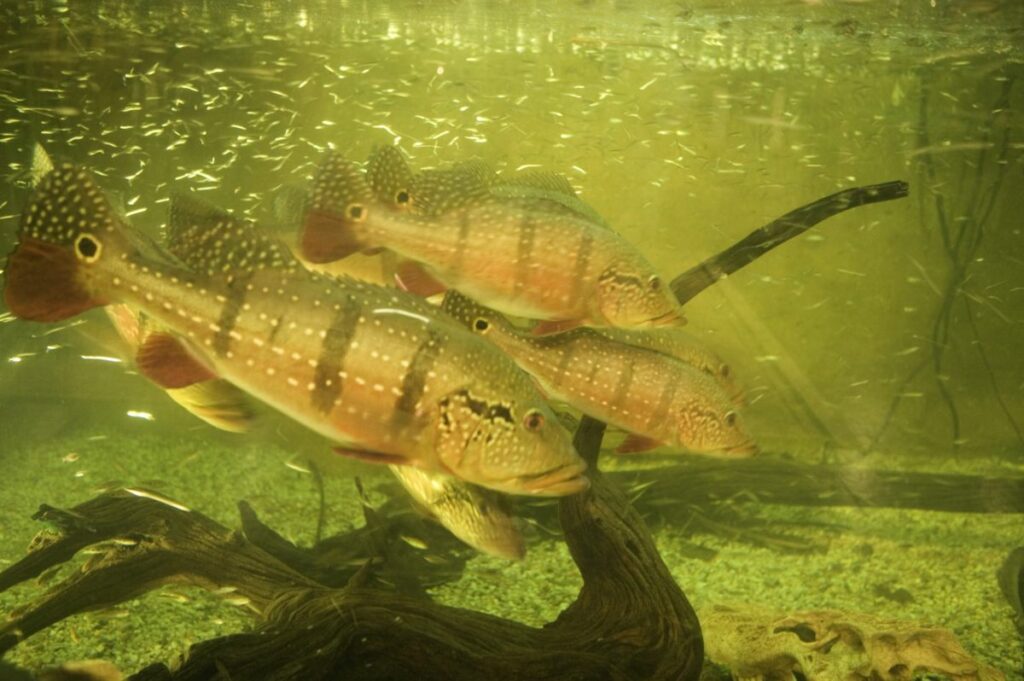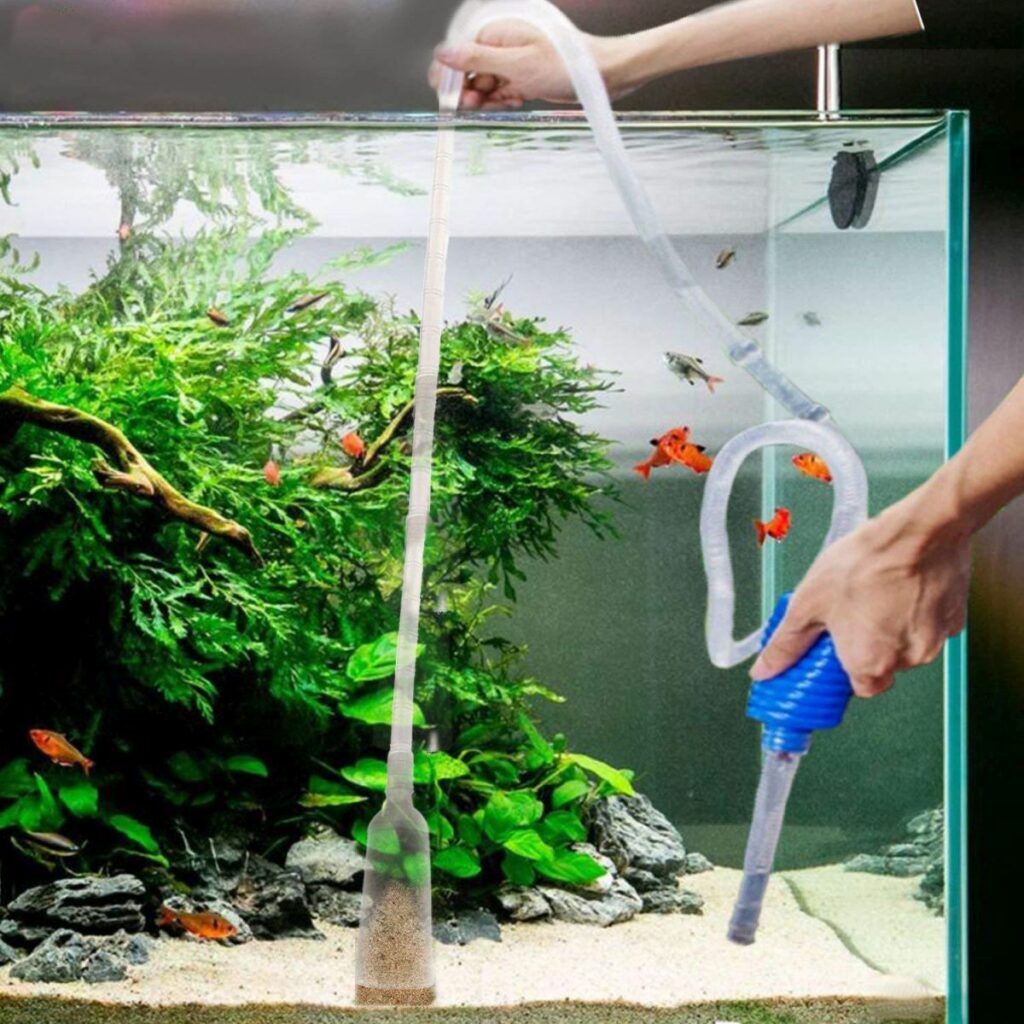Are you wondering, why did my fish die after a water change?
Fish are sensitive creatures that don’t like rapid changes. Their watery home needs to stay consistent for them to be happy and healthy.

So, if you don’t perform water changes correctly, it can make your fish go into shock, become sick, or die.
Why Do Fish Die After Water Change?
If you don’t do it right, you might experience fish dying after water change.
Large water changes can kill fish if you kill all the bacteria. It can also happen if you don’t match the water temperature, pH, and water hardness.
All Fish Died In A New Tank
If all your fish died in a brand new tank, it may be because you didn’t cycle the tank first. Before adding fish, all tanks need to go through the ‘nitrogen cycle’. The nitrogen cycle usually takes between two weeks to two months to complete. You should avoid adding fish to the tank during this time.
There is such a thing as a ‘fish-in’ cycle, but I don’t recommend this as it’s stressful for the fish. Instead, to jumpstart the cycle, add a bit of fish food to the tank.
The fish food will begin to break down and convert to ammonia. Ammonia is toxic to fish.
As time goes by, the ammonia will break down into nitrites, another toxic substance.
Lastly, the nitrites will break down into nitrates. Nitrates are toxic at high levels but are not as dangerous as nitrites and ammonia.
What causes these substances to break down? Beneficial bacteria.
Beneficial bacteria are the backbone of every healthy and successful aquarium. Without it, your fish aren’t likely to survive for long.
Without bacteria, these things can’t break down. The ammonia, nitrites, and nitrates continue to build up. The tank becomes a very toxic environment for your fish.
When you first set up a tank, there are no beneficial bacteria. So, your fish create waste, but there is nothing to break that waste down. So, your fish gets stressed and sick. Often, the fish will die.
Allowing the bacteria time to colonize is why you need to wait about a month before adding fish to a new tank.
The RSPCA says that “Beneficial bacteria grow on any surface in the aquarium and they are concentrated in the filter sponge/media which has a high surface area.”
Killing Beneficial Bacteria — The Myth
There is a misconception that you shouldn’t do a large water change. Some people think you’ll kill the beneficial bacteria in your tank.

But, most of the bacteria colonize within the filter media and gravel. Very little bacteria is actually within the water column.
So, this IS NOT likely the reason a large water change has killed your fish.
The exception is if you thoroughly clean the entire tank. ONLY doing a large water change won’t kill off bacteria. But, if you change the water, clean the gravel, and replace the filter media, that WILL kill the bacteria. Killing all the bacteria in your tank will cause your tank to crash and the nitrogen cycle to begin anew.
This is why it’s not a good idea to clean your gravel and your filter on the same day.
Not Matching The Water Chemistry
The most likely reason a large water change has killed your fish is that the new water didn’t match the old water. Fish are sensitive to rapid changes, so you need to introduce them to changes slowly. If you don’t, they can go into shock which can lead to sickness and death.
When changing the temperature in a tank, only increase or decrease the temperature by one to two degrees a day. If you change it faster than that, your fish’s body won’t be able to handle it, and they’re likely to go into shock.
So, imagine that you keep your fish tank at 78, but your tap water is only 70. If you do a partial water change, this likely won’t be a big deal. The water will mix, so the temperature of the tank may only change by one or two degrees.
But, if you do a 50%+ water change, the cooler water is going to change the water temperature drastically. If you did a 100% water change, then you’d be exposing your fish to temperatures far cooler than what they’re used to.
The same goes for the pH levels and the water hardness. Your tap water might have a different pH and water hardness level than your tank.
This can happen if you always use tap water for your tank. The water parameters in your tank can change based on a lot of different factors. So, even if you used tap water initially, the pH and water hardness may end up being far different than that of your tank.
Chlorine Poisoning

Chlorine is a common chemical in tap water, especially if you have city water. It’s toxic to fish, so you need to add dechlorinator to your tap water before adding it to your tank. If you don’t, the chlorine is likely to kill your fish.
Dr. Jessie Sanders says that “Fish exposed to chlorine can show signs of hypoxia, gill tissue necrosis and neurologic signs, including trouble swimming, incorrect body positioning and sudden death.”
How To Save Dying Fish After Water Change
If your fish goes into shock, you may notice them doing either of these things:
- Fish staying at bottom of tank after water change
- Fish swimming erratically after water change
- Labored breathing
- Floating on their sides
It’s difficult, but not impossible to save a dying fish that has gone into shock. You’ll need to act immediately upon seeing their distress, and follow these steps:
1. Stop feeding — temperature changes can mess with their ability to digest food.
2. Aerate the water — if possible, increase the flow rate of your filter, powerhead, or bubbler. If you can’t do those things, begin scooping out water with a cup and pouring it back in to create aeration.
3. Add a water conditioner — choose one like Seachem Prime or Seachem StressGuard Slime Coat Protection. These remove heavy metals and help your fish heal.
4. Add aquarium salt — aquarium salt works wonders for promoting healing and gill function.
How To Change Fish Tank Water Without Killing Fish
The best way to prevent a water change from killing your fish is to only do small water changes. If you do a 15-25% water change every one to two weeks, you’ll be able to keep your tank clean.

But, there are some circumstances where you might need to do a larger water change. In this case, it’s important that you match the new water with the tank water.
Test the water hardness and pH levels in both the tank and the new water. If they don’t match, you may need to add chemical balancers to get your new water to match the water in your tank.
Use a thermometer to check the temperature of both your tank water and new water. If the new water is too warm, let it sit for a few hours until it cools down. If it’s too cold, you may need to warm it up with an aquarium heater before adding it to the tank.
Should You Ever Do A 100% Water Change?
Sometimes, you may experience dangerous spikes of ammonia, nitrites, or nitrates. In these cases, it’s a good idea to do a 50%+ water change to protect your fish.
If A Fish Dies, Should I Change The Water?
If a fish dies, it’s a good idea to do a small, regular water change. A dead fish will release ammonia that can damage your tank, especially if you didn’t notice the death right away.
It’s not usually necessary to do a large water change. Test the water parameters after doing a small water change. If the toxins are still high, you may need to do a larger water change.
Conclusion
Water temperature, pH, and water hardness are the most common culprits of fish death after a large water change. Fish are sensitive to quick changes and will go into shock if the new water is too different from the old water.
To avoid fish deaths, test both the new and old water to make sure they match.
FAQs
If you have many tanks, the water parameters may be vastly different. You shouldn’t chuck one fish into a different tank because the new water parameters can be shocking to them.
When introducing a fish to a new tank, you should acclimate them. This involves floating them in a bag so they can get used to the change in temperature. It also involves adding small amounts of the new water to their bag. They will slowly get used to the new water parameters.
Doing many small water changes over several days is safer than doing one large water change. It gives the new water a chance to balance out the old water.
